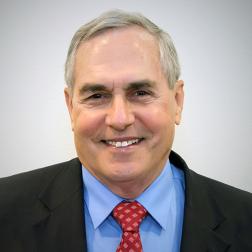State-To-State Dispute Settlement Under the USMCA Is Working!

Table of Contents
Author(s)
Share this Publication
- Print This Publication
- Cite This Publication Copy Citation
David A. Gantz, “State-to-State Dispute Settlement Under the USMCA Is Working!” (Houston: Rice University’s Baker Institute for Public Policy, January 27, 2022).
The state-to-state dispute settlement provisions of the United States-Mexico-Canada Agreement (Chapter 31) have been significantly improved compared to the parallel process under NAFTA (Chapter 20). With NAFTA, where for most of the time the three Parties could not agree on the appointment of a roster of thirty trade experts (from which the panelists supposedly would be semi-automatically drawn), any Party could block the panel process simply by refusing to appoint its arbitrators (two) or agree with the other party on the chairperson. As a result, only three panel decisions were rendered under NAFTA (Dairy, Broom-Corn Brooms and Cross-Border Trucking Services), the most recent of which was issued in February 2001. After the United States blocked the formation of a panel requested by Mexico regarding a dispute over sugar and high-fructose corn syrup and sugar for more than four years beginning in 1998, Mexico ultimately sought adjudication of the case under the WTO’s dispute settlement mechanism. A few years later, when the United States sought consultations under NAFTA for a dispute concerning shrimp and shrimp products, citing the NAFTA preference for resolving environmental disputes at the regional level, Mexico effectively said “no way.” Thus, from the early part of this century both Canada and Mexico relied exclusively on the WTO to resolve trade disputes, since WTO procedures were not effectively subject to delays by the responding Party.
The original version of USMCA Chapter 31 was different from but did not significantly improve on NAFTA Chapter 20, as once the required consultations proved unsuccessful it included no effective means of forcing a recalcitrant party to cooperate in appointing the panel rosters from which the panels were to be formed. However, in negotiations between the Trump administration and the Democratic Congress in November 2019, a modified process was agreed upon. The new approach provided that if one or more Parties had appointed roster members, but another had not, in the event of a dispute in which the responding Party refuses to appoint its panelists within no more than a total of forty days, the complaining Party would be able to select one or more panelists from the members of the roster appointed by the other Party or Parties. (Five panelists are provided for unless the Parties agree to limit the panel to three; a Party is directed to select its panelists from members of the roster who are not members of that Party.)
Under this procedure a Party risked losing complete control of the selection of panelists unless it cooperated in the formation of the roster. Not surprisingly, the three USMCA parties had agreed on a thirty-person roster before the USMCA went into force on July 1, 2020. The system is also protected against future disagreement on roster selection; under USMCA, in another departure from NAFTA, roster members, initially appointed for three-year terms, serve until their replacements are agreed upon. Thus, after three years if the Parties are unable to reach agreement on a new slate of roster members the original members will continue to serve.
It is already evident that the USMCA’s dispute settlement mechanism will be used more frequently than the deficient system under NAFTA. The first panel request under the USMCA was submitted by the United States against Canada in May 2021, charging that Canada was not complying with its obligations under the USMCA to (modestly) open its dairy market to milk product exports from the United States. The unanimous three-member panel decision was rendered in just seven months, in December 2021 and released publicly in early January 2022.
A second request for consultations was lodged by Mexico (and soon joined by Canada) in January 2022, following more than six months of consultations among the three USMCA Parties regarding the United States’ very restrictive interpretation of USMCA rules on calculating regional value content when applying the revised automotive rules of origin. According to Mexico and Canada, the United States has departed from the agreed approach, causing difficulties for both Canada and Mexico in meeting the increased regional value content for autos under the USMCA (from 62.5% to 75% over several years).
Also in January, several members of the Senate Finance Committee sent a bipartisan letter to the U.S. Trade Representative Katherine Tai, urging her as the U.S. Trade Representative to consider additional enforcement actions against Canada for its planned digital services taxes and Mexico for alleged slowness in labor reforms and agricultural biotechnology approvals. It is thus clear that at least some members of Congress see the USMCA dispute settlement mechanism, following a relatively prompt and favorable ruling on Canadian dairy imports, as a viable means of resolving trade disputes under the USMCA, an approach that in my view bodes well for the future whether or not these particular disputes become the subject of USMCA filings. A well-functioning USMCA dispute settlement mechanism is doubly important to the three USMCA Parties and to the continuing smooth functioning of the USMCA, given that the once-preferred WTO dispute settlement mechanism has been hobbled since December 2019 by disagreements between the United States and other members. These differences have prevented the members from reaching a consensus on appointing new appellate body members as existing members’ terms expire, emasculating that mechanism.
This material may be quoted or reproduced without prior permission, provided appropriate credit is given to the author and Rice University’s Baker Institute for Public Policy. The views expressed herein are those of the individual author(s), and do not necessarily represent the views of Rice University’s Baker Institute for Public Policy.



